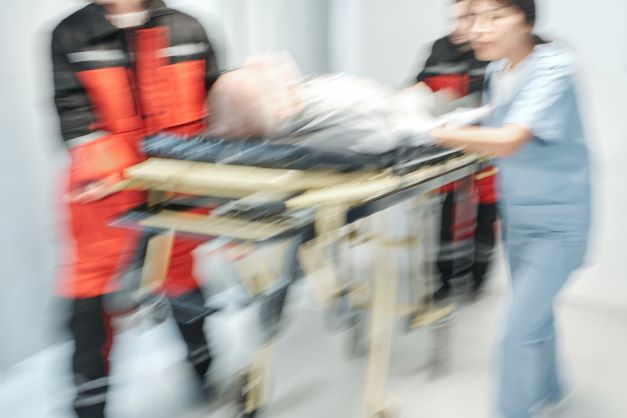Emergency Departments are a major access point to an organization’s healthcare services and an area of focus where patient safety and regulatory readiness are of utmost importance. Despite efforts of healthcare organizations to improve on their processes, we still observe opportunities that may lead to patient harm. Here are some examples of our observations from the field that may help you identify opportunities in your emergency services.
Findings from the Field
Cleaning and Disinfection:
As we have observed in other areas, Emergency Department staff are struggling with cleaning and disinfecting equipment per the manufacturer’ instructions for use (IFU). This includes following the correct process as outlined by the IFU and using the approved disinfectant. Organizations should ensure they are referencing the IFU when they establish their cleaning processes. Staff are also not following appropriate wet/contact times for disinfectant wipes. Staff should refer to the disinfectant IFU often listed on the product container.
Maintenance of Resuscitative Supplies:
Organizations are challenged to ensure their resuscitation equipment and supplies are ready for use. This includes crash carts, maternal hemorrhage carts, malignant hypothermia carts, and other related supplies. Most of our observations are of equipment/supply check logs being incomplete in documentation. Organizations should ensure they have well designed forms and processes that ensure that supplies are ready for use but do not create a logistical burden that leads to failures in documentation. Remember, you will be held to your policies and processes as well as any regulatory requirements.
Materials Management:
Availability of supplies for immediate use is always of concern for healthcare organizations especially in emergency situations. Maintenance of these supplies can be challenging. We have continued to find expired supplies predominately in more obscure storage areas that are not accessed frequently and in specialty carts. Contributing factors would include excessive par levels, loose organization of supplies and not having an efficient process to monitor for supply expirations. Staffing shortages can also limit the ability of organizations to maintain their supplies when they are concentrating on providing enough staff to support patient care. Collaboration with your materials management department on designing efficient storage and maintenance processes in your ED may be beneficial.
Maternal Safety:
With an increased focus on maternal safety across the nation, we are still noting that Emergency Departments have not taken measures to prepare their staff for maternal emergencies. This would include preparing staff in treating maternal hemorrhage and eclampsia. Many organizations transfer these patients directly to their maternal services departments upon presentation to the Emergency Department but if patients are not stable to transport or if resources are unavailable, there could be a critical delay in treatment. Organizations should ensure they have thoroughly assessed their processes for risks and vulnerabilities. Based on their findings, they should ensure their staff are trained, processes established, and equipment and supplies are staged to support an effective response for these patients. This should include the use of maternal safety drills to validate their readiness efforts and identify areas for improvement.
Medication Management:
Our observations are including using single-use medication vials as multiple patient vials, multi-use medications vials without expiration dates, IV fluid bags with missing overwrap without beyond use dating and cluttered/dusty medication areas/rooms. Additionally, we are not observing available medication resources for staff including Look Alike/Sound Alike lists, Hazardous Medication lists and High Alert Medication lists. Successful organizations have robust pharmacy oversight of their medication management programs including review of medication storage and preparation practices in their Emergency Departments
Moderate Sedation:
The use of moderate sedation is frequently used for procedures in the ED. We have observed opportunities with organizations not following their documentation policy requirements including thoroughness of patient assessments and frequency of vital signs. Additionally, we have noted that post procedure patient education sometimes lacks information on activity limitations because of the anesthesia effects. Periodic closed record review of moderate sedation cases from the ED may be an excellent means to trend and report on documentation compliance.
Sterile Instrument Reprocessing:
Reprocessing contaminated sterile instruments has been a continued focus for survey due to the risk of infection if the process is not aligned with safe practice. With the increased use of disposable instruments, most organizations are not having to reprocess as many instruments from areas outside of the surgical suite. However, we are still observing ED’s with contaminated instruments that are not prepared to include spraying with enzymatic cleaner or transported to sterile processing within a reasonable time for decontamination. We have also noted enzymatic cleaners that have expired due to the reduction in use. Organizations should ensure their process for dealing with contaminated sterile instruments is reviewed in their ED to keep this high-risk task aligned with good infection control practice.
Suicide Risk:
Safety for patients presenting with suicide risk is another high-level concern for patient safety. Organizations have made great strides in addressing the safe care of these patients. However, we are seeing a rise in concerns that organizations are not following their policies with assessment, monitoring, and ligature risk with behavioral patients in the ED. This could be contributed to the rise in behavioral health patients seeking care as the public health emergency continues into its third year. Staffing issues could be another contributing factor with increased turnover presenting less experienced staff. Our observations include ligature risk assessments not being kept up to date and staff performing one on one observations not being in close proximity to the at-risk patient per the organization’s policy. With increasing numbers of behavioral patients seeking care in the ED, it would be prudent for organizations to revisit their suicide risk policies and ensure their staff and physical environment is prepared to safely treat these individuals.
Workplace Violence:
Emergency departments are often a location of workplace violence in healthcare organizations. The increase in gun violence, drug abuse, behavioral health crisis, gang activity often invades the frenetic atmosphere of the ED. The incidence of workplace violence in healthcare has increased as a result. With the ED as a primary location of violence, we are finding opportunities where staff are not trained and drilled on specific procedures to follow in the event of workplace violence. Organizations have also not maintained a current assessment of their violence risk of their Emergency Departments which should identify risk priorities and drive mitigating actions. For organizations that have emergency or panic alarms, we have observed alarms that are non-functional as they have not been routinely evaluated.
Summary
Maintaining readiness and patient safety are priorities in the Emergency Department. Organizations should ensure they are rounding for opportunities to support staff in providing safe patient care. With increase patient demand for emergency care and the challenges of staffing, it is important for leaders to be vigilant for issues in this main access point for their services.
To learn more about patient safety and survey readiness in the Emergency Department contact the C&A team at 704-573-4535 or email us at info@courtemanche-assocs.com.


